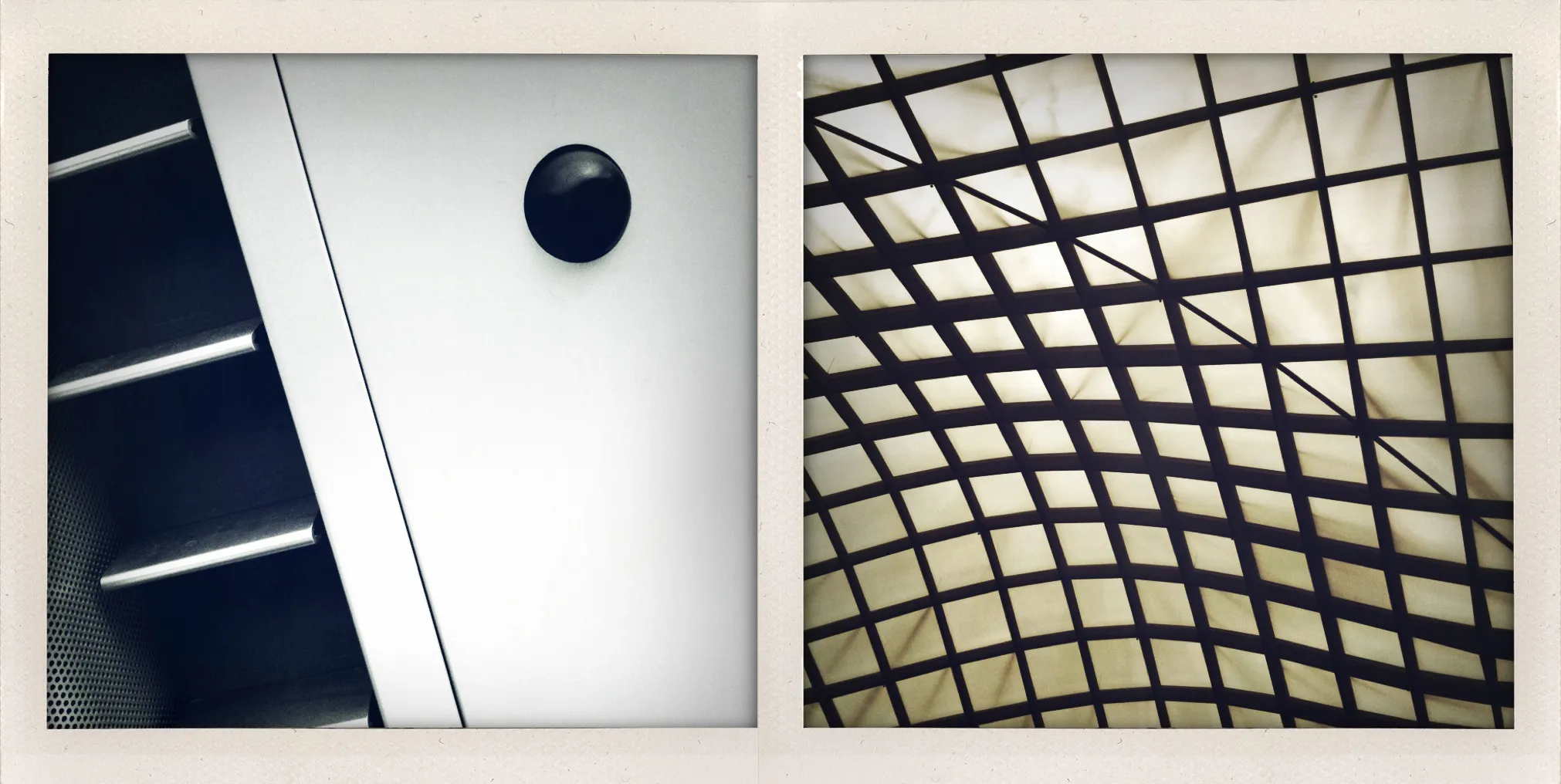Dip|Tychs Storytelling and Altered Contexts Through Juxtaposition
Shark!

This diptych titled “Shark!” uses pareidolia to transform architectural elements into predatory form. The left panel’s protruding stair treads read as shark teeth, while a black circular fixture becomes an unblinking eye. The right panel’s curved, backlit ceiling grid suggests scales or dorsal fin in motion.
The title triggers the transformation—what registers as abstract institutional architecture suddenly animates into something watchful and threatening. The work plays with how naming shapes perception, turning mundane surfaces into narrative. There’s humor in rendering a predator from stairs and ceiling panels, while maintaining the sleek menace associated with both sharks and surveilled institutional spaces.
Essay written: November 2025